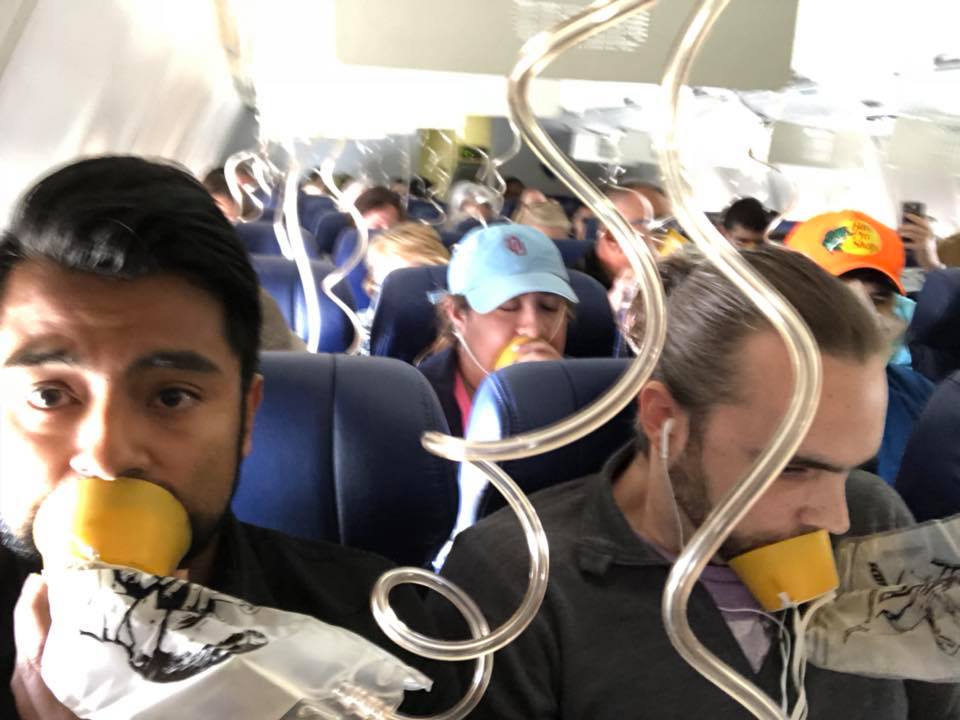
When Southwest Airlines flight 1380 suffered an engine failure on Tuesday, casual observers from around the world immediately realised this was potentially a serious aviation accident. News choppers quickly got to the scene, sending images of the damaged Boeing 737-700 to international news networks – all could see the twisted remains of the left engine and wonder what had unfolded just moments before.
Southwest Airlines Flight 1380 was supposed to be routine – a relatively short 4-hour flight from New York’s La Guardia to Dallas Love Field. But as it reached cruising altitude, the left engine suffered an uncontained failure (metal fatigue is suspected) – debris was thrown towards the aircraft, causing a window to shatter.
The rest has been documented in detail – a passenger, Jennifer Riordon, of Albuquerque, New Mexico was partially sucked out of the window. Other passengers desperately clung on to her – Riordon’s body from the waist up was sucked outside for several minutes as efforts were made to pull her back inside.
Once back inside, however, Riordon wasn’t breathing. An off-duty nurse is said to have helped perform CPR, even as the plane was making its emergency landing in Philidaphia. Sadly, Riordon succumbed to her injuries – the first fatality in the history of Southwest Airlines and the first death on an American aircraft in nine years.
In a world of smartphones and social media, it didn’t take long for the first images from inside the aircraft to surface. A vivid picture emerged of what exactly happened onboard – most of the photo’s and video can be attributed to Marty Martinez, a marketer and strategist from Dallas who was sat just two rows behind the window which broke.
“As the plane is going down, I am literally purchasing internet just so I can get some kind of communication to the outside world,” Martinez told CNN, explaining that he paid $8 for in-flight wifi in order to start a Facebook Live video.
Now infamous video shots of Martinez and other passengers with oxygen masks donned (although only covering their mouths and not their noses) have been widely circulated.
“Something is wrong with our plane! It appears we are going down! Emergency landing!! Southwest flight from NYC to Dallas!!” an accompanying Facebook post from Martinez reads.
“Engine exploded in the air and blew open window 3 seats away from me,” he wrote as the plane was still in the air.
Conventional wisdom would tell us that Martinez’s actions were a nasty and unhelpful byproduct of our obsession with social media – unwise, inappropriate and selfish maybe. Even though we devour the images and listen intently to his recollection of the incident.
But maybe we should be kinder to Martinez and others who have, in the past, filmed and documented in-flight emergencies.
Accident investigators, for one, may well find the photos and videos from inside Southwest flight 1380 invaluable. True, there were plenty of passengers who could give their own accounts of what they saw, smelt, and felt for example but eyewitnesses have a nasty habit of getting things wrong.
Take, the ‘Miracle on the Hudson’ incident from 2009 – a doomed US Airways flight which was forced to ditch in the Hudson River when a bird strike took out both engines shortly after takeoff. Passengers have consistently provided conflicting and sometimes wildly misleading accounts of what happened – even when confronted with facts that would prove the contrary.
Instead, videos and photographs provide an unbiased record of exactly what happened – not influenced by the tricks our brains so often play on us when trying to recall an incident.
After all, how many passengers in the Southwest incident would be able to recall that they only placed the oxygen mask over their mouths – ignoring multiple safety instructions to position it over their mouth and nose?
Martinez’s video, however, may well help safety regulators take appropriate steps to avoid such mistakes from happening in the future. Potentially, a life-saving intervention which was only known because a passenger documented what was happening.
The same can be said of disruptive passengers – law enforcement ordinarily rely on written witness testimony but a video of the passenger behaviour will prove a lot more valuable to a court of law.
As is stands, though, many airlines prohibit filming and photography onboard their aircraft – and that’s unlikely to change. Publicly, both airlines and safety regulators will insist that other passengers facing a similar situation to Martinez shouldn’t follow his lead.
There are obvious risks – slowing down an evacuation, distraction, getting in the way of first responders, invasion of privacy, the list goes on.
Just look at the now infamous scenes from inside the Emirates EK521 accident in 2016. Video images shot by a passenger showed others grabbing hand luggage from inside overhead lockers even as they faced mortal danger from an engine fire.
The images have progressed an important debate on what airlines can do to encourage passengers to leave hand luggage behind during an evacuation – but did the person filming this, delay the evacuation even further?
This is a debate that will no doubt, go on and on. There’s definitely an argument to allow passengers to film and document in-flight emergencies but it’s unlikely to ever be actively encouraged.
Related
Mateusz Maszczynski honed his skills as an international flight attendant at the most prominent airline in the Middle East and has been flying ever since... most recently for a well known European airline. Matt is passionate about the aviation industry and has become an expert in passenger experience and human-centric stories. Always keeping an ear close to the ground, Matt's industry insights, analysis and news coverage is frequently relied upon by some of the biggest names in journalism.







